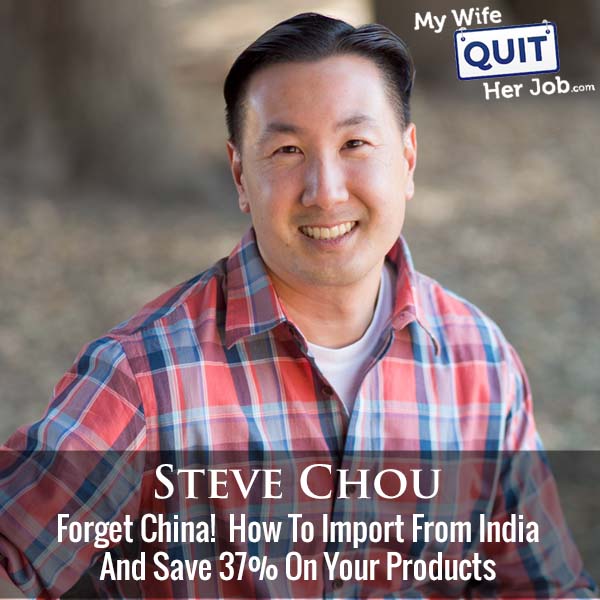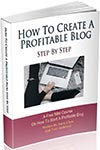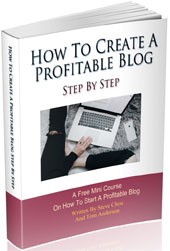Podcast: Download (Duration: 11:23 — 13.3MB)
In this Family First Friday episode, I teach you how to go beyond sourcing from China, find great suppliers in India and get the lowest prices possible.
Check out this India Sourcing Trip organized by my friend Meghla Bhardwaj. This is an 8-day learning, sourcing and cultural guided tour to India.
Use the code STEVE for $300 off – https://www.indiasourcingtrip.com.
Get My Free Mini Course On How To Start A Successful Ecommerce Store
If you are interested in starting an ecommerce business, I put together a comprehensive package of resources that will help you launch your own online store from complete scratch. Be sure to grab it before you leave!
What You’ll Learn
- What You Should Source From India?
- How Do You Find A Manufacturer In India?
- The Products India Excels At Making
Transcript
In this episode, I’m going to teach you how to get lower prices for your products by importing from India. Now, if you’ve been following this podcast for any length of time, you know that I have a lot of material on how to import from China. But China has gotten a lot more expensive over the years. And not only that, during the Trump era, the president imposed heavy tariffs on many product categories ranging from 10 to 25 percent, which still exist today and probably are not going away anytime soon.
00:27
These heavy tariffs have caused many companies to move their manufacturing operations to other countries to avoid the extra taxes. And one of the biggest beneficiaries of the tariffs has been India. And today’s podcast is going to teach you how to go beyond sourcing from China, find great suppliers in India and get the lowest prices possible. What’s up, everyone? You are listening to My Wife, Quitter, Job podcast, where I teach you how to make money online by exploring different tools, strategies and understand how to leverage human psychology to grow your sales.
00:56
Welcome to a special segment of the show called Family First Fridays, where I go solo to give you my thoughts on how to make money without sacrificing your lifestyle. Now, if you haven’t picked up my book, The Family First Entrepreneur yet, head on over to mywifequitterjob.com slash book, fill out the form and get over $690 in free bonuses. Also, if you enjoy the content of this show, make sure you sign up for my free six day e-commerce mini course over at mywifequitterjob.com slash free. Now over the years,
01:26
India’s economy has been booming and they’ve been making huge strides in various industries. From textiles, handicrafts jewelry to technology, pharmaceuticals and automotive, the range of products India offers is pretty extensive and exceptional in quality. In addition, India’s proactive government policies has encouraged foreign trade by signing free trade agreements with many countries, including the United States, which means lower duties and more importantly, no tariffs. Right now, there’s never been a better time to import from India
01:56
And depending on what products you decide to source for your e-commerce business, you can import products from India that are the same or better than China in terms of quality at cheaper prices. Now, let’s just start off by comparing China versus India overall in terms of overall cost. When it comes to manufacturing any product, the cost of labor usually factors heavily into the end price. And this is why whenever someone asks me about buying from the United States, it’s usually a non-starter for most products. For example,
02:25
the cost of labor in China is 4x lower than the US. And India’s cost of labor is significantly lower than China. Now, if you look at the minimum wage among different countries in Asia, you’ll notice that the average minimum monthly wage is about 170 bucks a month in India compared to about $360 a month in China. So in other words, the average cost of labor in China is over 2x that of India. Now keep in mind that this is just an average of the minimum wage.
02:53
In a recent study conducted by Procon Pacific, it is estimated that the overall labor cost is roughly 37 % cheaper in India than China when it comes to manufacturing. And this difference in labor costs and tariffs is one of the many reasons why China has been losing global export market share in the past several years. And by losses, we’re talking losses of about 10 % or more. Meanwhile, both India and Vietnam have been gaining market share in droves. Now, given the cheaper cost of labor,
03:23
Why not source everything from India? Well, the main downside is that unlike China, India does not make every kind of product well. For example, China is the leader electronics, toys, machinery, and India is not gonna overtake China anytime soon in those categories. So what is India good for exactly? And what should you source from India? Well, here are the main product categories where India shines in terms of manufacturing. The first type of product is anything made out of leather.
03:50
India is the world’s second largest exporter of leather goods such as shoes, bags, and garments. And they have a long history of leather production and a skilled labor force that is well-versed in leather processing. India is also a major producer and exporter of textiles such as cotton, silk, and wool. In fact, India’s textile industry is one of the largest in the world. In addition, there’s a huge variety of product made out of steel, ceramics, and bamboo that are unique to India that can be imported and sold in the US and other countries.
04:20
Now the thing about India is that every different region of India specializes in something different. And if you’re looking for a supplier, you basically have to find one in the right location. For example, Mumbai specializes in steel, kitchen products, and textiles. Ludhiana specializes in wool products. Pennepat supplies home furnishings. Bangalore specializes in apparel, hardware, silk, and coffee. Kurgia makes ceramics. Kolkata specializes in leather bags. I’m not going to list them all.
04:48
but there’s a map that I’ll post in the show notes for more information. Now the key thing to realize here is that India doesn’t make everything, but what it does manufacture, it does very well and at lower prices. So overall, India’s probably not going to replace sourcing from China completely anytime soon, but here are the main reasons why I personally sourced from India for my e-commerce store over at Bumblebee Linens. One, the production costs are lower. For our handkerchiefs and linens,
05:16
I’d say on average prices are lower by about 15 to 20%, especially after you factor in customs duties. And unlike China, the US has free trade agreements with India because there’s not a trade war going on. The second reason is to diversify my product risk. Unfortunately, US-China relations haven’t been that great as of late, so I’m playing it safe and diversifying my factories all over the world. I remember during the pandemic, my wife and I were terrified when one of our main factories shut down in China.
05:44
and we had no idea when they were reopened. And third, India is awesome for textiles, which is what we mainly sell in our shop. The prices and quality for fabrics and handiwork is as good or better than China at lower prices. And then finally, the overall trend is that China exports are going down and more and more brands are sourcing from India due to lower prices. In fact, many of the companies I work with in China have opened factories in other Asian countries to avoid the US tariffs.
06:12
and experts are predicting that China’s market share will continue to fall in the coming years. Now that I’ve gotten you excited about sourcing from India, how do you find a supplier over there? And unfortunately, there’s no Alibaba for India and there’s no magical directory for Indian suppliers. This means that you often have to do your own legwork to find a factory. Now the good news is unlike China, many India factories actually have websites that you can browse and find online. And one of the easiest ways to find a supplier is by using
06:42
Google Bard. For example, let’s say you want to source leather bags from India. Leather bags are primarily made in Kolkata, India, so you can simply use this prompt. Provide me with a list of potential suppliers from Kolkata that have more than 100 workers in their factory and export to the United States. And within seconds, Bard will give you a bunch of factories that you can reach out to. Now you can also find some India manufacturers on Alibaba, but it’s pretty rare. So overall, the best way to find a factory in India though, is to use a sourcing agent.
07:12
In fact, my friend Meghla is a sourcing agent over there and I’ll post her information in the show notes. A sourcing agent is someone who resides in India that has close ties to the factories over there. They will help you contact vetted suppliers, negotiate on your behalf, and help you navigate the various certifications in order to import from there. If you are interested in learning more about product sourcing and sourcing agents, make sure you sign up for my free six-day mini course over at mywifequitterjob.com slash free. Now once you have a list of factories,
07:41
you must learn how to approach suppliers in India. And in many respects, importing from India is a lot like importing from China and relationships are everything. You must treat your supplier like a partner and project confidence in your dealings. Never admit that you’re a newbie. Be professional and act larger than you are. After all, if you look at yourself from a supplier’s point of view, would you rather work with a newbie who doesn’t know anything? Or would you rather work with a client that knows what they want, is decisive and ready to buy?
08:11
Here’s a sample script for initial contact that you can use. Hey, my name is Steve and I’m a buyer from Bubble Me Linens, a store in the US that sells handkerchiefs. We are interested in carrying many of the items that you have to offer. Specifically, I would like to get pricing and availability for the following items. Please send pricing in 500, 1000, and 5000 unit quantities. If you could send us your product catalogs, lead times for manufacturing, and your minimum order quantity, we would greatly appreciate it. Now, after you get a reply with pricing,
08:39
Keep in mind that these aren’t the final prices that you’ll be paying. You are expected to negotiate. This isn’t like the US where prices are fixed. In India, anything goes. And before you begin your negotiations, you should have a target price in mind. Now, how do get this target price? Well, basically, you must figure out how much you can sell your product for online by looking on Amazon, eBay, or any other website. Then you take this number and you divide it by four. Now, this is a very rough calculation for what your target price should be.
09:09
But in general, you want to be able to make at least a 66 % margin on what you sell after shipping and customs. Now, as you negotiate with your supplier, you should ask questions about what affects the pricing and the minimum order quantity. For example, with our store, there’s always some wiggle room regarding the different fabrics we use for our hankies, the thickness of the fabric, how it’s treated, et cetera. And in general, the more you buy, the cheaper your costs are going to be.
09:34
I always like to get pricing upfront for different order quantities so I know what to expect as my volume grows. But in general, your ability to negotiate will heavily depend on your perceived value as a customer. And this is why you must project confidence in your negotiations. Anyway, if the pricing is within your ballpark, you should request a sample of the product to be sent to you. And then if you like to sample, you can arrange for a bulk order and shipping to your home country. Here’s just a couple of questions you should ask your factory. What is the minimum order quantity?
10:04
What is the production time? How will the product be shipped? For orders shipped by sea, you should hire a freight forwarder. You should also ask what the HS code is for your product. The HS code, or Harmonized System Code, is a standardized system of names and numbers to classify traded products. And this code is used by the customs authorities around the world to identify products for the purposes of levying duties and taxes. And with this code, you’ll want to check to see if there are any customs duties from India for your products.
10:33
Once you are ready to place your order, you typically have to put down a deposit of 20 to 30 % to cover the cost of materials and then pay the remaining balance upon completion. If this is your first time importing from India, rest assured that it’s highly unlikely that you’ll get outright scammed, but quality control can be a problem. You should always hire an inspection service like KEMA to inspect the goods before they are shipped. KEMA will spend an inspector to your India factory to make sure your goods are as you expect for about 300 bucks.
11:03
and hiring an inspector is 100 % worth it. Because once your goods are shipped from India, it’s way too expensive to return them to India if there are defects. Now that you understand the basics of importing from India, make sure you check out all my other resources on the blog, YouTube channel, and podcasts on how to import from overseas step-by-step.
I Need Your Help
If you enjoyed listening to this podcast, then please support me with a review on Apple Podcasts. It's easy and takes 1 minute! Just click here to head to Apple Podcasts and leave an honest rating and review of the podcast. Every review helps!
Ready To Get Serious About Starting An Online Business?
If you are really considering starting your own online business, then you have to check out my free mini course on How To Create A Niche Online Store In 5 Easy Steps.
In this 6 day mini course, I reveal the steps that my wife and I took to earn 100 thousand dollars in the span of just a year. Best of all, it's absolutely free!

















